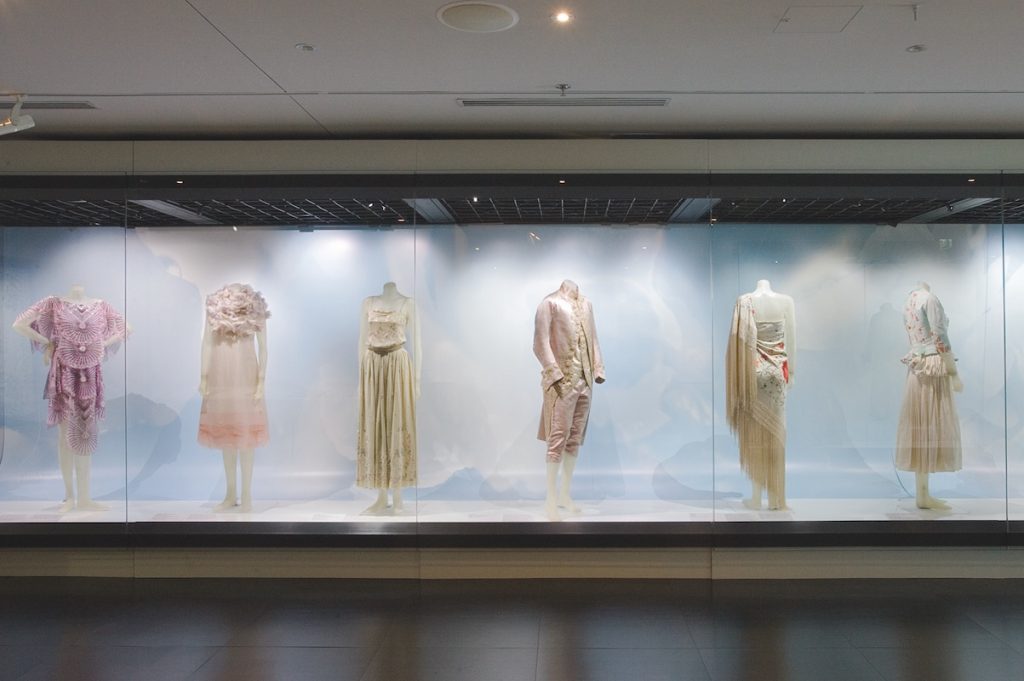Everlasting: The Flower in Fashion and Textiles
Everlasting: The Flower in Fashion and Textiles is the first exhibition in Australia to survey the enduring presence of floral themes and motifs within western fashion and textiles. On display are forty-six examples of women’s and men’s dress, textiles and accessories dating from the middle of the sixteenth century to the dawn of our present century. The exhibition is drawn mainly from the National Gallery of Victoria’s International Collection, with the addition of one loan, and features works by designers including Jean-Philippe Worth, Madeleine Vionnet, Emilio Pucci, Dolce & Gabbana, Yohji Yamamoto and the Australian designers Thomas Harrison and Akira Isogawa.
The ways in which floral subject and form have been represented, distorted and enhanced for flat textiles and clothing in the round is the overriding premise of the display; a format inviting comparisons of place and chronology. The works in Everlasting are presented in a number of broad themes that highlight the many ways that flowers are manifest in fashion and textiles: from embroidery, lace and appliqué to beading and weaving, through to the printing and dyeing of cloth or the construction of a garment.
The three-dimensional nature of the flower guides the design of a garment, as seen in the structure and decoration of Isogawa’s Dress and capelet , 2000. Using flowers as accents, whether as a swathe or a discrete highlight, is a recurring theme in many works, including Dance dress, c. 1925, and the Comte for Renata Evening dress, c. 1974. Working within a subdued palette and limiting the tones to privilege texture over colour is evident in a group of works that include the sparkling Worth Ball gown, 1897. The modernist approach to flowers has been far more abstract, a strategy used so effectively by Vionnet with her signature Art Deco rose on Evening dress and slip, c. 1923.
A number of traditional techniques cluster into themes throughout Everlasting. The earliest works are the Italian needle laces from the sixteenth and seventeenth centuries. Embroidery forms the longest continuum in the display bridging over three hundred years of professional and domestic needle work and encompassing styles ranging from the Elizabethan Headdress, late 16th century to the contemporary Jacket and skirt 2000 by the Tokyo designer Yohji Yamamoto.
The exhibition will include a multimedia display based on the themes of botanical illustration and the symbolism of flowers.
Photo courtesy of National Gallery of Victoria, Melbourne
